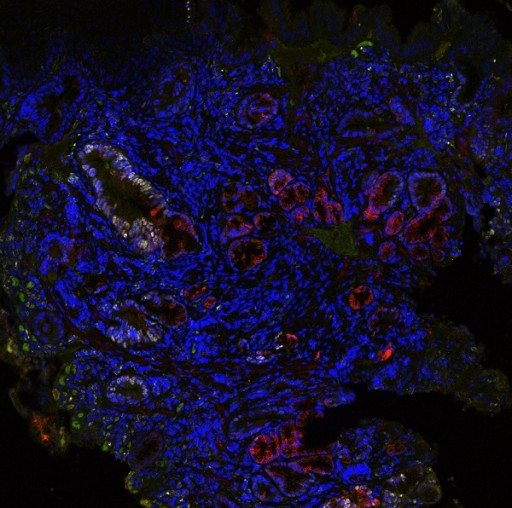
PITTSBURGH - October 22, 2019 - (Newswire.com)
Cernostics, developer of AI-driven image analysis solutions for pathology assessment of tissue biopsies, announced upcoming presentations at the American College of Gastroenterology (ACG) and the United European Gastroenterology Week (UEGW) conferences in October, involving positive clinical evidence supporting its TissueCypher® Barrett’s Esophagus Assay as a means to improve risk prediction in patients with Barrett’s esophagus (BE) in both low-grade dysplasia (LGD) and non-dysplastic disease.
Results from Cernostics’ TissueCypher® SPatial and Temporal Study (SPaT) with Academic Medical Centre, Amsterdam, will be presented, representing the fourth independent validation of TissueCypher performance in non-dysplastic BE (NDBE) patients, making TissueCypher the most validated medical test designed, developed and commercialized for improving risk stratification of patients with BE.
Frei, et al., will present a poster (ACG #P0269 on October 27) demonstrating that TissueCypher identifies NDBE patients who progress at a higher rate than patients with confirmed LGD (42% by five years or 8.4% per year). TissueCypher provides independent predictive information not available through other methods of testing, and the sensitivity increases when evaluating multiple biopsies taken from the same endoscopy.
Other findings being presented (UEGW #P1990 on October 23; ACG #P0270 on October 27) this month support expanded indications of TissueCypher into community diagnosed LGD, as seen in the SURF (Surveillance vs. RadioFrequency ablation) Biomarker Study. TissueCypher’s multiplex biomarker assay provides an easily reproducible and objective diagnostic tool now routinely available for Barrett’s patients. Multiple validations have proven that TissueCypher’s findings are equivalent to what was previously available only with access to select expert pathologists. Further data review implies that TissueCypher testing in this indication may save unnecessary treatments on incorrectly diagnosed LGD without missing lifesaving treatments for those in need.
“Our study supports how effective the TissueCypher test can be at predicting risk of progression on par with that of a panel of expert pathologists, which is limited by inter-observer variability and is seldom available to most clinicians who manage BE patients,” said Jacques Bergman, MD PhD, Professor of Medicine and Endoscopy, Academic Medical Centre, Amsterdam. “Cernostics’ TissueCypher test enables performance only available to select expert pathologists to be routinely available as a standardized test, supporting physicians in making confident decisions about patient care.”
“These new studies further validate the ability of TissueCypher to improve risk stratification of patients with BE, addressing a critical need to prevent development of esophageal cancer in these patients,” said Mike Hoerres, Cernostics’ CEO. “TissueCypher is the most validated precision medical test available for clinicians today, and we’ve shown that incorporating high-dimensional molecular, cellular and morphologic data into a single assay improves our ability to identify progressor patients early. Assessing progression risk enables early interventions that reduce mortality, improve outcomes and provide more cost-effective management of BE patients.”
About Barrett’s
BE affects more than three million Americans, occurring when chronic exposure to stomach acid causes the esophageal cell lining to deteriorate and undergo changes that can create an environment for cancer. Without treatment, Barrett’s can lead to EC, with a poor five-year survival of less than 20%. Today, Barrett’s is commonly managed by surveillance, involving regular endoscopic procedures with biopsy, monitoring disease progression, and GERD-related drug therapy to control symptoms and prevent esophageal injury.
About Cernostics
Cernostics is leading the way in the third revolution in pathology – AI-driven image analysis for pathology assessment of tissue biopsies. This digital revolution transforms pathology from subjective, limited, morphology-based analysis to one that combines molecular, cellular, and morphologic expression, spatially resolved. This automated, objective, high-dimensional analysis supports pathologist assessments and leads to new biologic insights, better patient outcomes and increased healthcare value.
The company has delivered to the clinic its first proprietary clinical test, the TissueCypher Barrett’s Esophagus Assay. The test predicts the development of esophageal cancer, a highly lethal cancer, and provides physicians the opportunity to intervene before the patient gets cancer. For a complete listing of Cernostics’ published patents, visit www.cernostics.com/IP.
Media Contact
Lisa Bichsel
Cernostics, Inc.
719-640-5640
###
Press Release Service by Newswire.com
Original Source: TissueCypher® Further Validated to Accurately Risk Stratify Barrett's Esophagus Patients With Non-Dysplastic or Low-Grade Dysplasia Diagnoses: Findings Shared at Two Major GI Conferences
